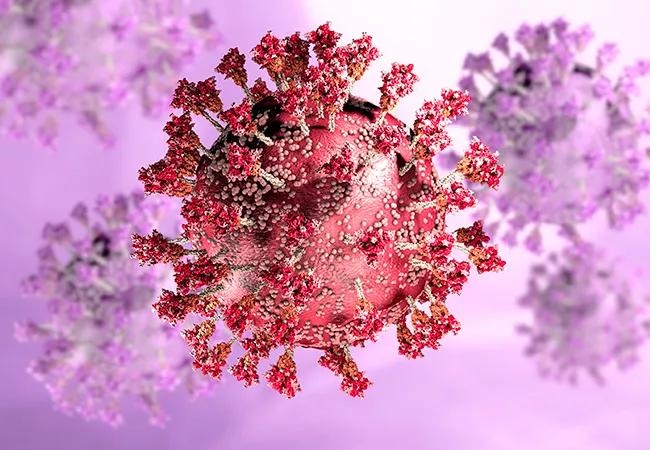A Q&A with Steven Gordon, MD, infectious disease physician at Cleveland Clinic

New cases of coronavirus fueled by the omicron variant have soared since late 2021. The variant has been detected in most states and territories in the United States, according to the Centers for Disease Control and Prevention.
Cleveland Clinic is a non-profit academic medical center. Advertising on our site helps support our mission. We do not endorse non-Cleveland Clinic products or services. Policy
While its reproduction rate and virulence are still unknown, experts have made a few important observations about this variant. “Transmissibility is the keyword,” says Steven Gordon, MD, infectious disease physician at Cleveland Clinic. “We are seeing a de-coupling of infection with severe outcomes for immunocompetent patients.”
That’s not to say omicron-related infection can’t lead to severe morbidity or mortality, but there is a disparity between the number of cases and the percent of hospitalized patients, he explains.
How is this uptick in cases affecting the public health response to the pandemic? From testing, treatment and terminology to a potential pivot in management (dealing with permanence) and hope for a pan-coronavirus vaccine, Dr. Gordon answers our questions in a recent interview:
Dr. Gordon: The Biden Administration invoked the Defense Production Act to accelerate production of at-home rapid tests and plans to distribute 500 million tests. You can now order free antigen tests (four per household) at covidtest.gov. Supply will continue to be important, particularly as antigen testing is at the cornerstone of the CDC’s test-to-stay strategy to help prevent viral spread within schools.
Dr. Gordon: The CDC recently announced a change in terminology from “fully vaccinated” to “up-to-date.” The former reflects the status of a person who has received their primary series of COVID-19 vaccines, and the latter includes all recommended doses, including a booster when eligible. This was done to recognize fluid changes in boosting and indication, necessitated by the omicron variant.
Vaccines and boosters continue to be the best way to slow transmission and protect yourself and others from severe infection, hospitalization and death. It’s also the best way to reduce the emergence of a new variant.
Speaking of indications, the CDC also recently recommended shortening the interval from 6 months to 5 months for the Pfizer-BioNTech COVID-19 vaccine and now endorses boosters for 12 to 15-year-olds, as well as immuno-compromised children from ages 5 to 11.
Dr. Gordon: Yes, treatment in the outpatient space will be expanding, but supply for all of these new treatments is limited. The oral antiviral drugs Paxlovid and Molnupiravir have both been approved for ambulatory patients at high risk for progression. In terms of monoclonal antibodies, we have Evusheld for pre-exposure prophylaxis for our most severely immunosuppressed patients. Finally, we have Sotrovimab, which is our only current monoclonal antibody active against omicron, and that is exclusively used for early infection for people at high risk.
Dr. Gordon: The omicron wave has galvanized a pivot from a pandemic mindset to one of permanence, and we are starting to see more of that dialogue at a policy and population level. What does that look like? It’s about managing risk, not cases. Countries like Spain and others in the European Union and United Kingdom, for example, are reframing public health goals to focus on preventing severe illness and mortality by targeting vulnerable populations through frictionless testing and timely therapeutics. In some ways, this mirrors our current influenza model, keeping schools open, for example, but also investing in engineering upgrades, such as ventilation systems.
Dr. Gordon: There is some potential hope for a pan-coronavirus vaccine. This is an exciting development coming out of the Walter Reed Army Institute of Research. They’ve got a new platform for a spike ferritin nanoparticle vaccine that is now in phase II studies and may be effective against many species of coronavirus. It’s still early, but I think we will continue to hear more about this in the coming months.

Patients report improved sense of smell and taste

Clinicians who are accustomed to uncertainty can do well by patients

Unique skin changes can occur after infection or vaccine

Cleveland Clinic analysis suggests that obtaining care for the virus might reveal a previously undiagnosed condition

As the pandemic evolves, rheumatologists must continue to be mindful of most vulnerable patients

Early results suggest positive outcomes from COVID-19 PrEP treatment

Could the virus have caused the condition or triggered previously undiagnosed disease?

Five categories of cutaneous abnormalities are associated with COVID-19